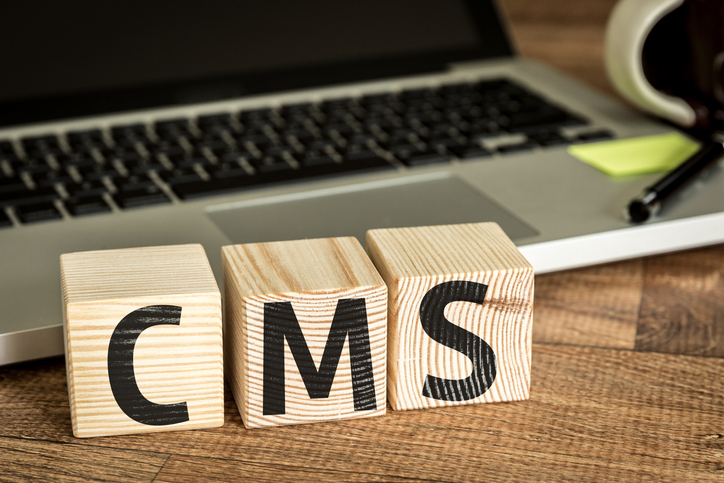This week, the Centers for Medicare & Medicaid Services finalized updates to its physician fee schedule for 2024, as well as finalized the rule for next year’s Outpatient Prospective Payment System (OPPS).
The federal agency is planning to raise reimbursement rates for hospital outpatient departments and cut payments for physicians. Provider groups are displeased with CMS’ updated rules, arguing that both physicians and provider organizations need more monetary relief than what the agency is offering.

With the Rise of AI, What IP Disputes in Healthcare Are Likely to Emerge?
Munck Wilson Mandala Partner Greg Howison shared his perspective on some of the legal ramifications around AI, IP, connected devices and the data they generate, in response to emailed questions.
2024 Medicare Physician Fee Schedule Final Rule
CMS’ physician fee schedule conversion factor for 2024 is $32.74, which is down from $33.89 in 2023. This marks a decrease of $1.15 — or 3.4%. The agency calculates a new conversation factor each year when it creates a new physician fee schedule. The factor is used to determine payment rates based on the cost and difficulty of a medical service or procedure.
Overall, the updated rule will reduce physicians’ Medicare payments by 1.25% in 2024 compared to this year. The reimbursement cuts for 2024 come after a 2% reduction in physician payment in 2023.
Provider groups have reacted negatively to the updated rule. American Medical Association President Dr. Jesse Ehrenfeld pointed out in a statement that the changes do not come close to keeping up with inflation and will lead to financial instability for both patients and physicians. They will “wonder why such thin gruel is being served,” he declared.
“There is widespread acknowledgement that access to care is being threatened. The declining revenues in the face of steep cost increases disproportionately affect small, independent, and rural physician practices, as well as those treating low-income or other historically minoritized or marginalized patient communities,” Dr. Ehrenfeld said.
As a part of the changes to its physician fee schedule for next year, CMS will also establish a separate add-on payment for healthcare common procedure coding system code G2211. This new code will better account for the resource costs associated with visits having to do with the primary and longitudinal care of complex patients, the agency said. It will generally be applicable for outpatient and office visits as an additional payment.
Medical Group Management Association said that the new add-on code will do a poor job of ensuring fair compensation for physicians.
“Implementation of a new add-on code (G2211) for complex patients highlights CMS’ flawed approach to addressing inadequate Medicare payments for primary care services using a budget neutral methodology. Congress must reexamine existing law to provide an annual physician payment update commensurate with inflation and do away with Medicare’s ‘robbing Peter to pay Paul’ budget neutrality requirements to provide much-needed financial stability for medical practices,” Anders Gilberg, senior vice president of government affairs for the association, said in a July statement responding to CMS’ proposed rule.
The 2024 physician fee schedule final rule also includes changes to the Medicare Shared Savings Program, such as moving accountable care organizations toward digital measurement of quality. These changes seek to advance providers’ participation in value-based care.
The updated rule includes provisions to boost health equity as well. For example, CMS is allowing marriage and family therapists and mental health counselors to enroll in Medicare for the first time ever — they can enroll now and start billing for their services beginning January 1. The agency will also make payments to practitioners who train caregivers to support patients with certain conditions, such as dementia.
2024 Medicare Hospital Outpatient Prospective Payment System and Ambulatory Surgical Center Payment System Final Rule
For next year’s OPPS, CMS will boost outpatient payment rates by 3.1%. This increase includes a 3.3% market payment update, offset by a 0.2% cut for productivity.
The payment updates will impact about 3,500 hospitals and 6,000 ambulatory surgical centers across the country. While the final rule’s payment increase is slightly more than the 2.8% CMS proposed in July, provider groups are still unhappy with the update.
For instance, the American Hospital Association issued a statement calling the payment increase inadequate.
“Today’s increase for outpatient hospitals of only 3.1% comes in spite of persistent financial headwinds facing the field. Most hospitals across the country continue to operate on negative or very thin margins that make providing care and investing in their workforce very challenging day to day. Hospitals’ and health systems’ ability to continue caring for patients and providing essential services for their communities may be in jeopardy, which is why the AHA is urging Congress for additional support by the end of the year,” said AHA Executive Vice President Stacey Hughes.
In addition to the payment increase, the updated OPPS rule includes some changes concerning CMS’ price transparency regulations. Under the new rule, hospitals will be required to display their charge information in a more standardized format — a change CMS said will help make price transparency data easier for patients to understand. The updated rule also includes measures to enable more streamlined enforcement of the price transparency regulations.
Remedy for the 340B-Acquired Drug Payment Policy for Calendar Years 2018-2022 Final Rule
To remedy illegal payment cuts for 340B drugs from 2018 to 2022, CMS will issue a $9 billion lump sum payment to each hospital participating in the 340B program. The finalized plan for this remedy was included in CMS’ 2024 OPPS final rule.
The 340B program — which refers to Section 340B of the Public Health Service Act — enables eligible hospitals and providers to purchase certain outpatient drugs at discounted prices from manufacturers. The program aims to support the availability of affordable medications for vulnerable patient populations while also promoting cost control measures for providers.
Before 2018, the Medicare payment rate for Part B covered outpatient drugs was the average sales price plus 6%. However, CMS adjusted the payment rate for 340B drugs in 2018 to the average sales price minus 22.5%.
In June 2022, the Supreme Court ruled that these payment cuts were unlawful. This decision came after hospital groups sued HHS, arguing that CMS does not have the authority to make cuts to the 340B program under its OPPS. The Supreme Court sided with hospitals, deeming the reimbursement cuts illegal because HHS failed to conduct a survey of hospitals’ acquisition costs prior to enacting the rates.
In September 2022, the District Court for the District of Columbia put an end to the payment rates CMS implemented in 2018, and the 340B program reverted to paying providers a default rate of the average sales price plus 6%.
The $9 billion lump sum seeks to rectify the nearly four years of unlawful payment cuts for 340B drugs. About 1,700 hospitals are slated to receive these funds by January 1.
CMS said it will maintain budget neutrality while carrying out this remedy. To do this, the agency will have to make payment cuts in another area.
When CMS rolled out its 340B drug payment cut plan in 2018, the agency increased its payments for non-drug items and services. The agency estimates that hospitals were paid $7.8 billion more for non-drug items and services during the nearly four years the 340B cuts were in place. To achieve the $7.8 billion budget neutrality adjustment, CMS will decrease non-drug item and service payments going forward. This plan to offset costs is slated to begin in 2026, and the agency expects it to take 16 years.
Industry groups are unsatisfied with CMS’ remedy. Hospitals getting paid for the 340B payments that were illegally withheld from them shouldn’t come at the cost of payment decreases in other areas, American Hospital Association President Rick Pollack said in a statement.
“HHS made a grievous mistake in choosing to claw back billions of dollars from America’s hospitals, especially those that serve rural, low-income, and other vulnerable communities. HHS decided to ignore hundreds of comments from hospitals and other providers explaining why this Medicare cut is both illegal and unwise,” he declared.
340B Health, an organization representing providers taking part in the 340B program, also took issue with CMS’ remedy.
“We strongly disagree with CMS’ decision to cut future reimbursement to hospitals, including 340B hospitals, to offset these lump-sum repayments. This approach diminishes the remedy’s impact and, as applied to 340B hospitals, results in an estimated 16 years of underpayments for hospitals that provide 77% of Medicaid care and 67% of the nation’s unpaid hospital care for the benefit of low-income and rural communities,” 340B Health CEO Maureen Testoni said in a statement.
Photo: gustavofrazao, Getty Images















